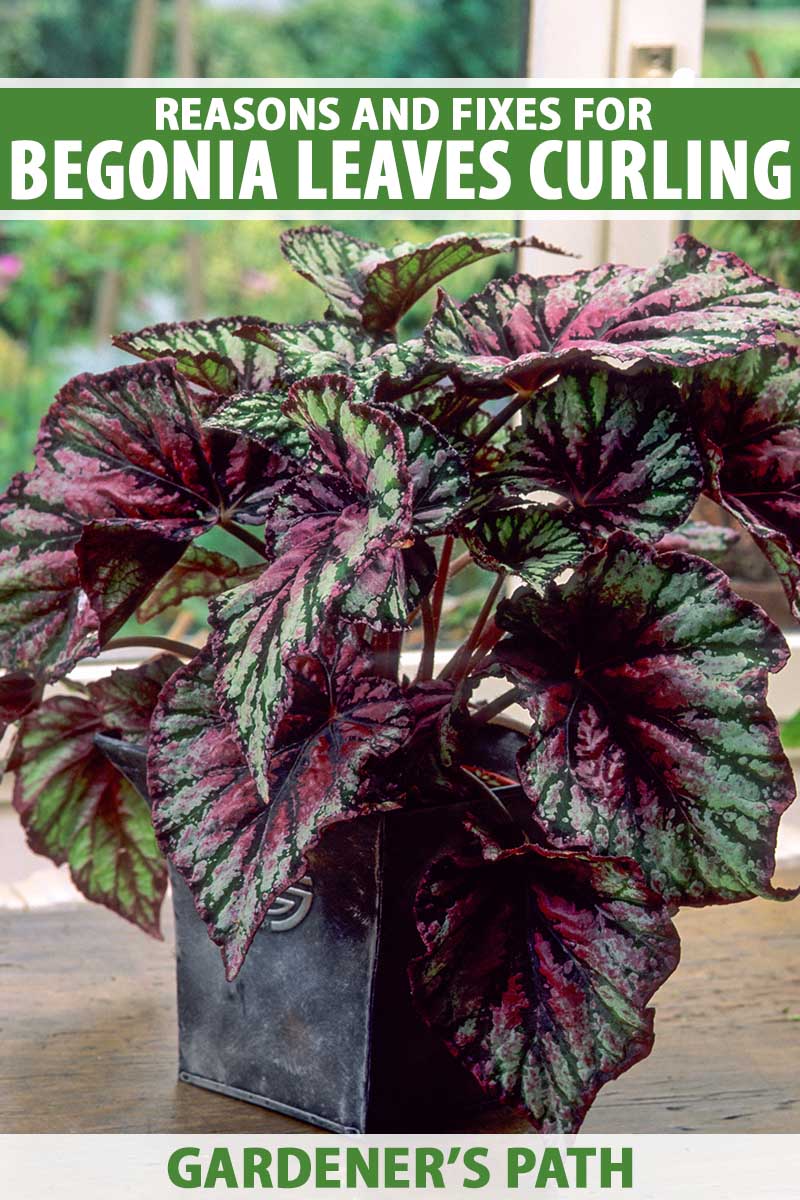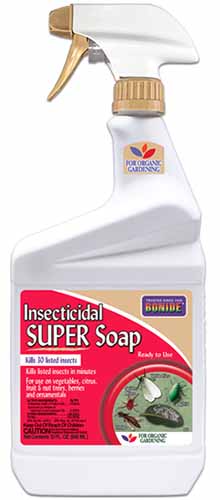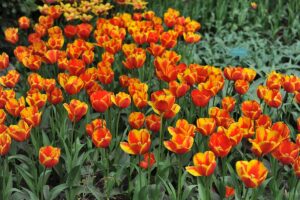Begonias are available in an astonishing variety of leaf shapes.
Some look like angel wings, others resemble ferns, and there are even some that curl and twist – almost like a snail shell.
The latter is the good kind of curling begonia leaf. Then there’s the bad kind of leaf curl.
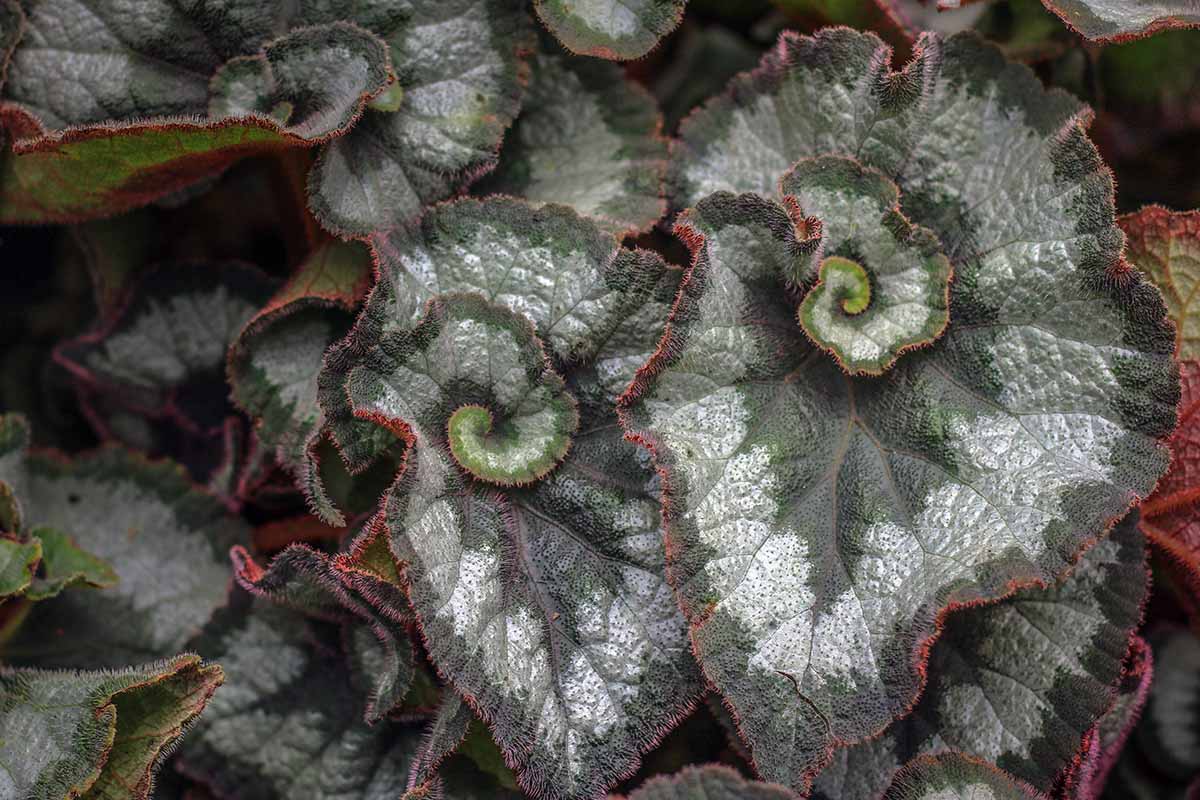
We link to vendors to help you find relevant products. If you buy from one of our links, we may earn a commission.
Begonia leaves might curl up or down, horizontally, or vertically along the center, as a result of some kind of stressor.
In this guide, we’ll chat about what causes this type of abnormal leaf growth and what you can do about it, whether it’s affecting a pretty wax type in your garden or a striking angel-wing houseplant that’s got curling leaves.
Here’s what I’ll cover:
Causes of Begonia Leaf Curl
If you’re not sure whether your specimen is a type that is supposed to have curling leaves, read our guide to classifying begonias using the leaves and stems.
The first problem we’ll look at is one caused by caring too much. Yes, it’s possible to be an overly attentive plant parent.
1. Excess Fertilizer
Whether you’re growing your begonias inside or out, they all need mild, balanced, all-purpose fertilizer.
When the plants receive too much food, salts can build up in the soil and the begonias may react by twisting and curling the leaves upwards, among other symptoms.
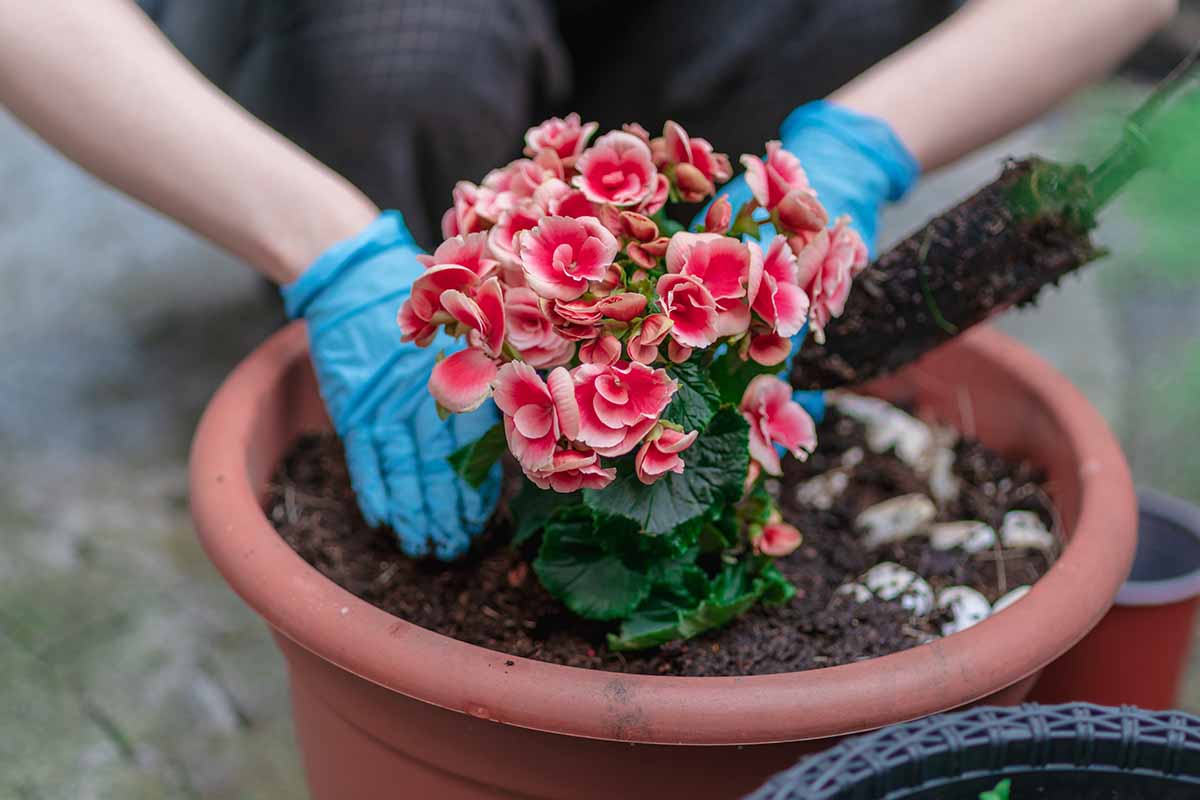
Outdoor flowering plants should be fertilized once a month, starting just before they flower and continuing until they are finished blooming.
Begonias grown as houseplants should be fed every other month from early spring through fall. Don’t be tempted to add too much or fertilize too often.
Indoors, I like to use Dr. Earth House Plant Pump and Grow. It has an NPK ratio of 1-1-1 and is made out of recycled organic food scraps discarded from grocery stores.
Dr. Earth House Plant Pump and Grow
A 16-ounce bottle with a convenient pump top is available at Arbico Organics.
For outdoor begonias, Down to Earth makes a nice option called a “Vegan Mix,” which has an NPK ratio of 3-2-2 and is made of soybean, alfalfa, and kelp meal, along with rock phosphate and greensand.
Pick up five pounds of the good stuff in a compostable box at Arbico Organics.
Even if you’re fertilizing on the correct schedule with the right food, it’s still possible to overfeed. For outdoor begonias, you should be testing your soil regularly.
Maybe your soil is naturally rich in potassium and here you are adding extra on top of that, for example.
Many plants will simply not absorb more than they need, but when there’s far too much, it can burn the roots and cause curled leaves.
2. Herbicide Injury
If you’re growing your begonias outdoors and you notice curling leaves, look at other nearby plants of different species.
Do they have curled leaves, too? Or perhaps their foliage is wilting and yellowing? If so, it’s highly probable that they’ve suffered herbicide injury.
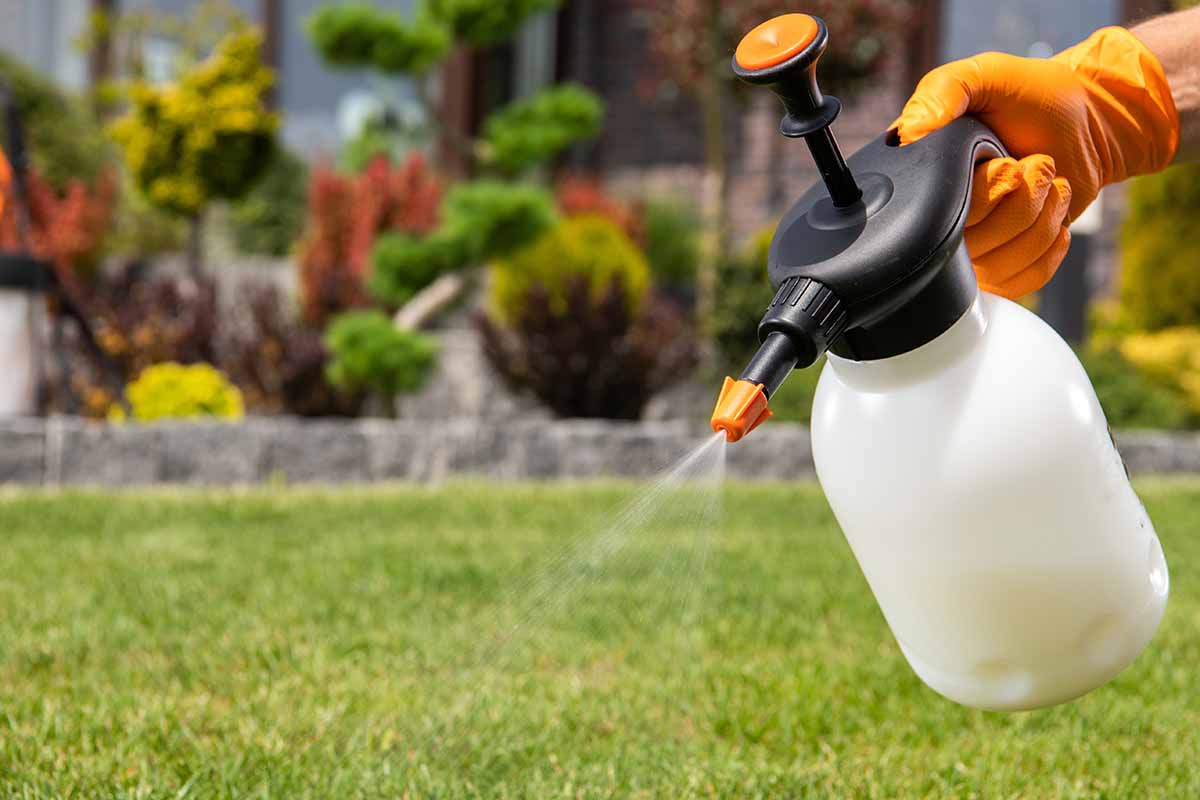
Even if you didn’t apply herbicides in your own garden, it’s possible that some wafted over from a neighbor or maybe your local government applied herbicides to public areas nearby. Or perhaps you recently treated your lawn?
You might wonder if what you are seeing is a result of a pest or disease issue. Typically, specific pests or diseases stick to plants in the same genus or family.
Powdery mildew in legumes, for example, is caused by Microsphaera diffusa while in begonias it’s caused by Oidium begoniae.
But if totally unrelated species are symptomatic, the cause is usually something else like a watering issue or herbicide damage.
So, if your begonias and nearby hostas are both showing symptoms of leaf curl, it’s probably not a pest or disease issue since the plants are from different genera.
If you suspect herbicides are the problem, there’s not much to do except find where they came from and stop it from happening again.
3. Mealybugs or Scale
Sapsuckers like mealybugs and scale cause stress to the begonia, and this stress can result in curling leaves.
Both scale and mealybugs are fairly easy to identify once you know what to look for. Both are oval and flat, and either brown, tan, black, or white with a waxy coating.
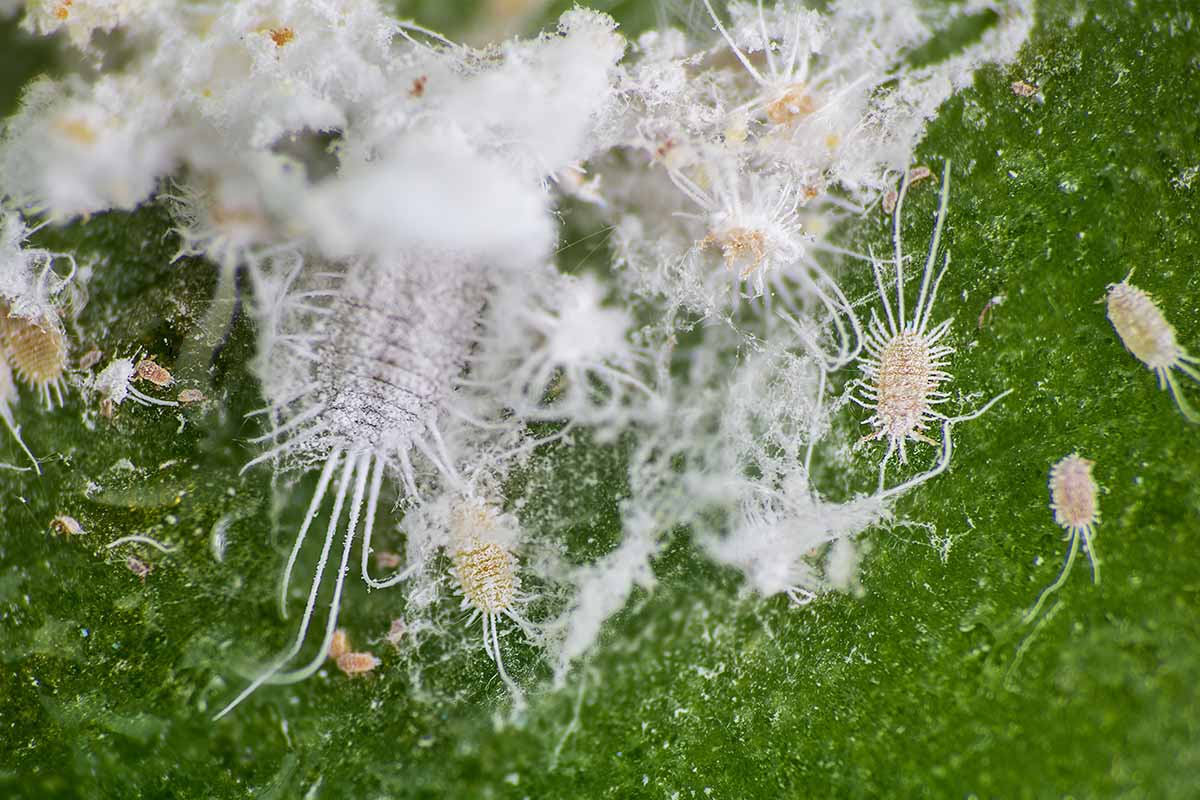
They like to hang out on the stems and at the leaf joints, so look closely in those areas.
These pests don’t move much, and they tend to cluster together, so people sometimes mistake them for symptoms of a disease.
But try scraping them off and squishing them –if they come off easily or they can be smashed, they are bugs, not symptoms of a disease. I know, gross.
If scale or mealybugs are the cause of the leaf curl, you can simply scrape them off the plant using a butter knife or dab them with a cotton swab dipped in isopropyl alcohol.
4. Mites
Broad, tropical, or begonia mites (Polyphagotarsonemus latus) are an invisible monster. They’re about 0.02 millimeters in length, so you won’t be able to see them with the naked eye.
These pests thrive in the same conditions as begonias, namely warm and humid. You’ll find them all over in greenhouses and tropical areas and they feed on many warm-weather species.
When the mites feed on the plant, they cause the terminal leaves to curl and roll. They can also cause deformed buds and stunted growth.
You can get out a magnifying glass and examine the begonias closely to try and see the mites.
They like to hide in areas that are shaded and hidden. If you see them or even suspect an infestation, treat the plant with insecticidal soap.
Spray once a week with the soap on a day when there is no rain expected if your plants are outside. Insecticidal soap is handy to have around since it tackles many insect problems.
Grab some Bonide Super Soap in quart-sized ready-to-use containers at Arbico Organics.
5. Underwatering
Most of the time, if you don’t give your plants the moisture they need, they wilt. But chronic underwatering causes curling and leaf browning along the margins in many begonia species.
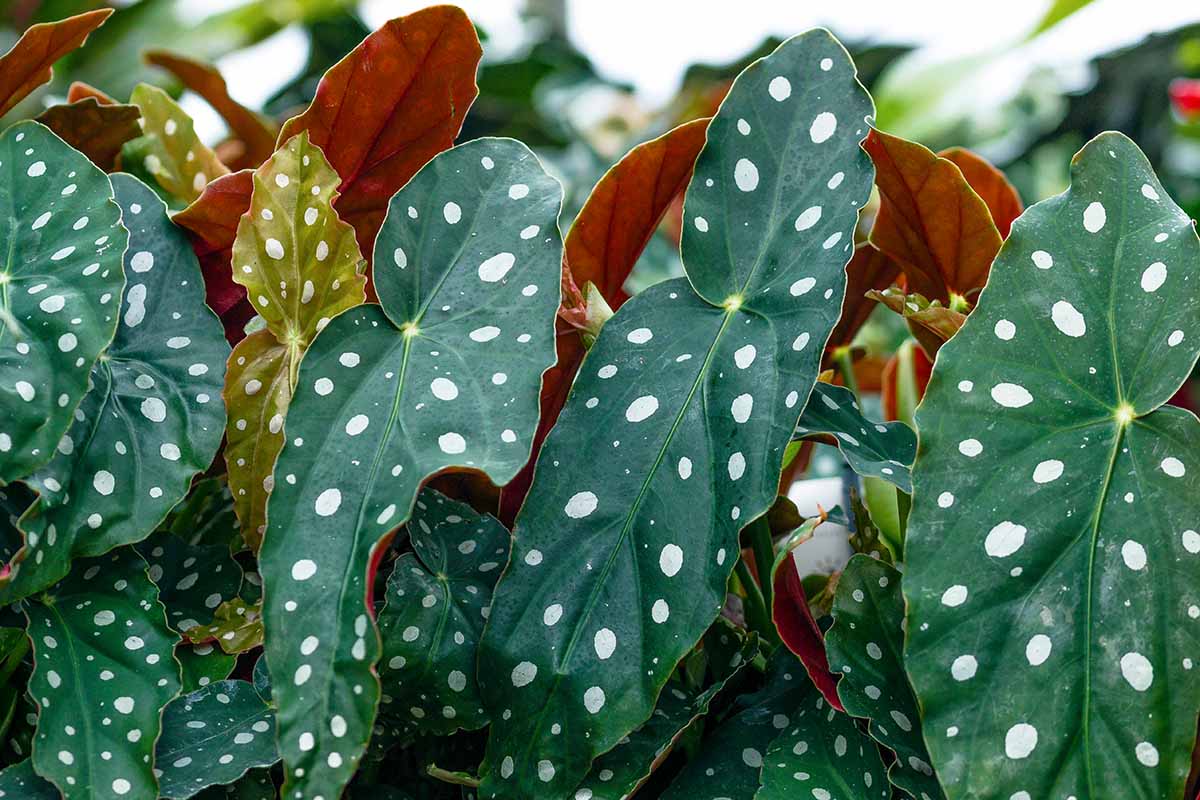
Most commonly cultivated begonias do best when the soil is kept consistently moist and not allowed to dry out completely or get too wet.
Usually, over- or underwatering once or twice isn’t the end of the world, but if it happens repeatedly, it really starts to stress the plant and can cause leaf curling and stunted growth.
Guess what the solution is? Give your plants the right amount of water!
If you grab a bit of soil and roll it in your hand, it should just hold together for a minute before it falls apart. If it crumbles immediately, it’s too dry. If it sticks together and water squeezes out, it’s too wet.
It’s easier for me to just envision the texture of a well-wrung-out sponge. That’s what the soil should feel like.
6. Overwatering
As with excess fertilizer, overwatering is a helicopter plant-parent problem. It’s more commonly seen in potted plants, but it can happen with plants in the ground, as well.
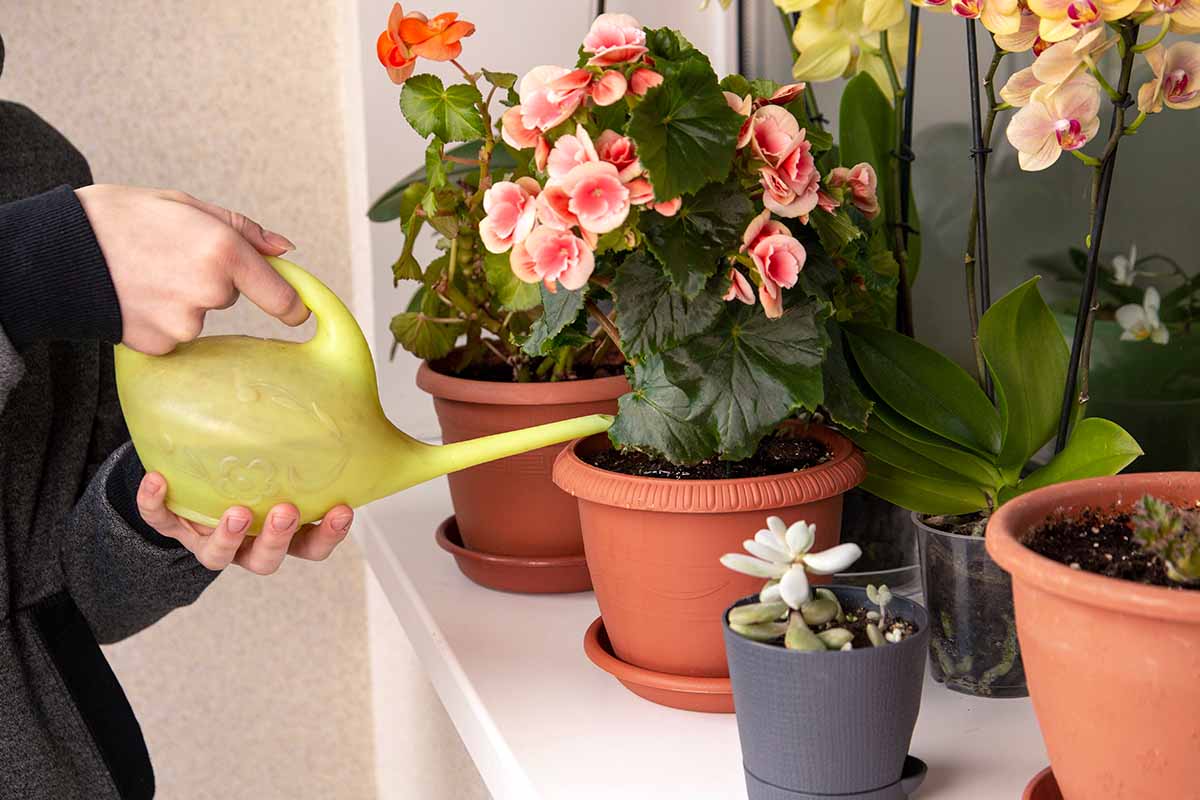
Overwatering once won’t cause too much trouble. But when it happens over and over, the leaves on your begonias might start to curl and turn brown.
This happens because the roots underground are essentially drowning. They can’t access enough oxygen and the whole plant is stressed.
Reduce the amount of water you’re offering by half and give the plant some time to recover.
If your plants are growing in containers, check to make sure the soil is draining well and the drainage holes aren’t clogged.
If they are growing in the ground, consider how much water you’re providing based on how well your soil drains. You shouldn’t be adding water more frequently if the soil isn’t draining sufficiently.
7. Viruses
Many viruses attack begonias. Impatiens necrotic spot (INSV), tobacco ringspot (TRSV), broad bean wilt (BBWV), cucumber mosaic (CMV), tobacco necrosis virus (TNV) are all possibilities.
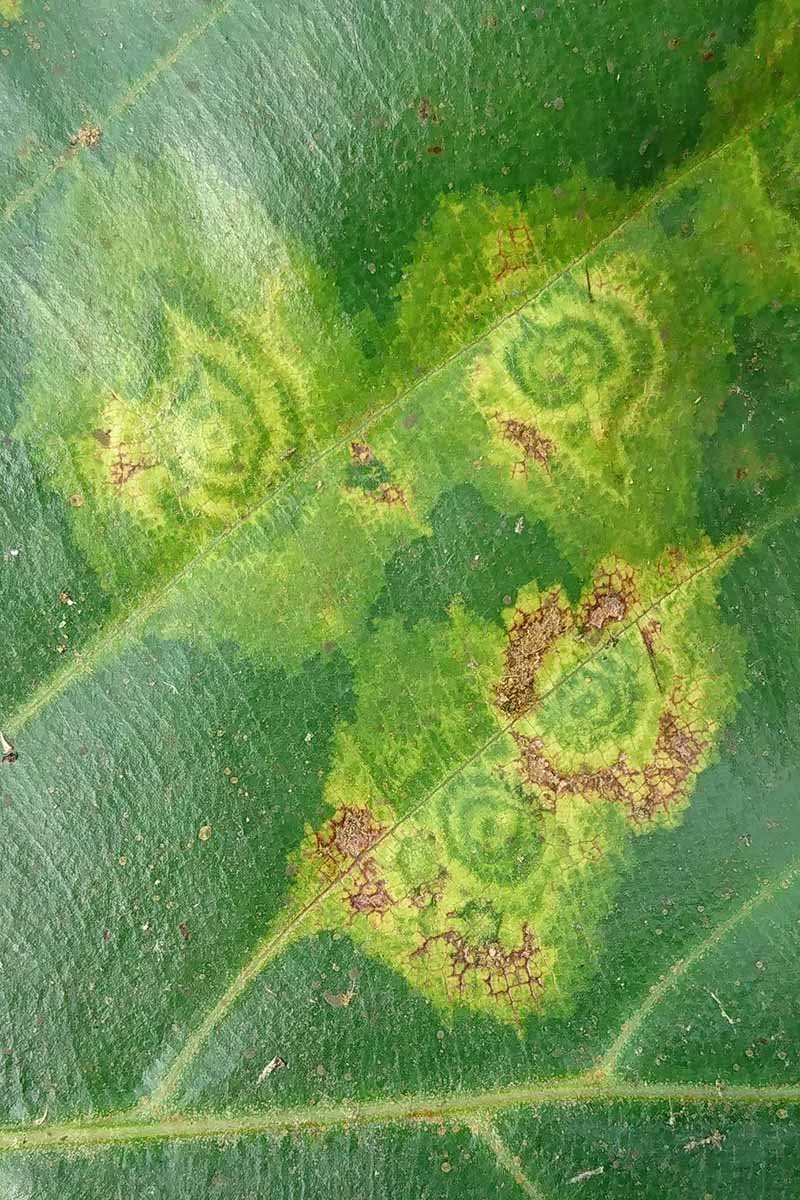
All of them cause discoloration and malformed growth that can include curled leaves. Look for angular yellow patches, distorted growth, and curled leaves.
Don’t worry about the specifics. It doesn’t really matter which virus your plant is infected with.
If it’s sick, the only thing you can do is toss it. Otherwise, you risk the virus spreading to other specimens via insects like aphids and thrips, and these viruses attack many, many species. Plus, there is no cure.
Don’t Curl Up and Die
Curls in your hair or your fries are a good thing. Curling begonia leaves are usually a bad sign.
Whether it’s caused by viruses, pests, or another problem, leaf curl is rarely something you want to see. The good news is that curling leaves is usually something you can deal with.
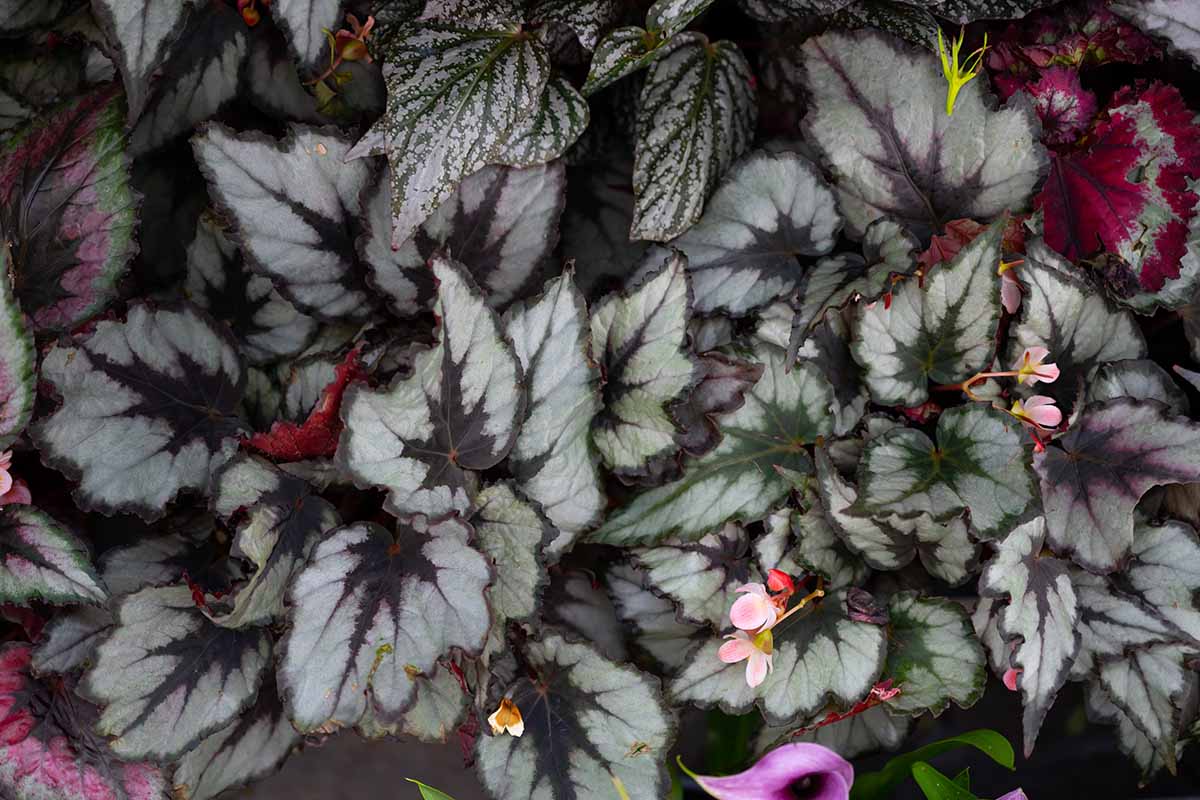
Which cause is affecting your plants? Were you able to figure it out? Do you need more help? Either way, let us know what’s going on in the comments section below.
Ready to learn a bit more about begonias? We have a few other guides that might interest you, including:
